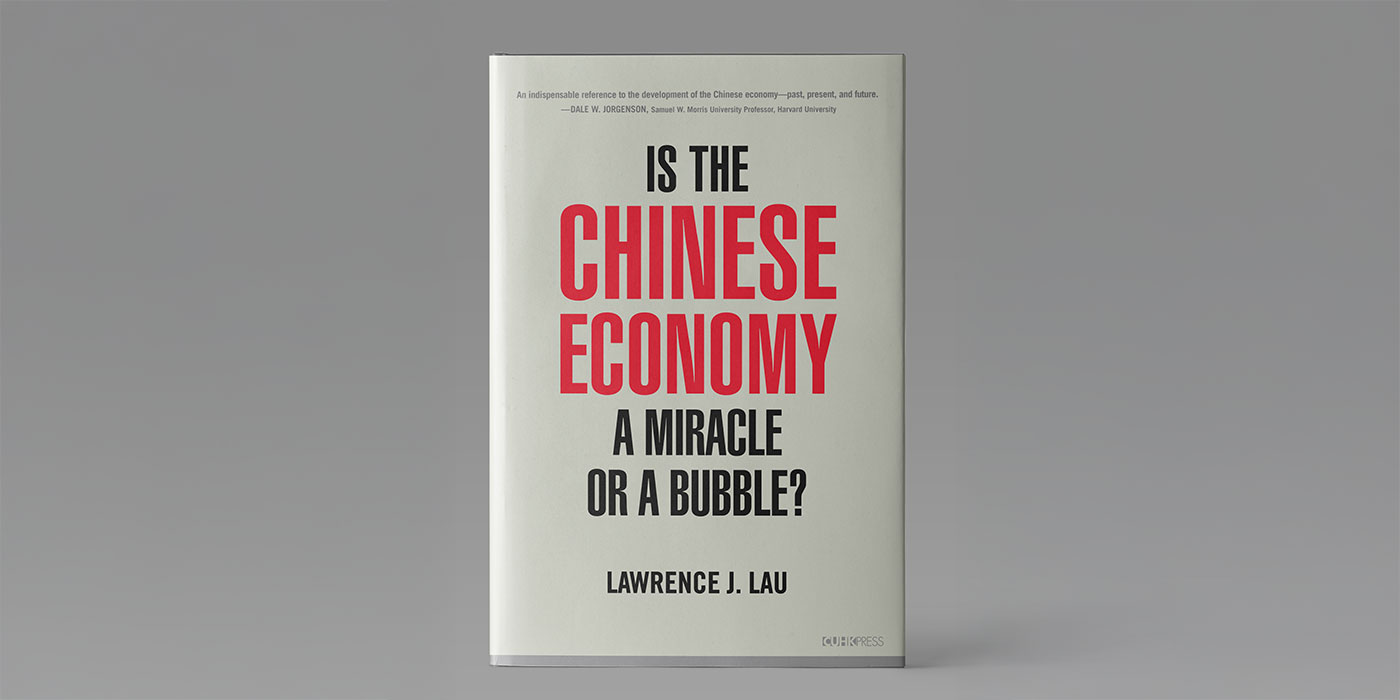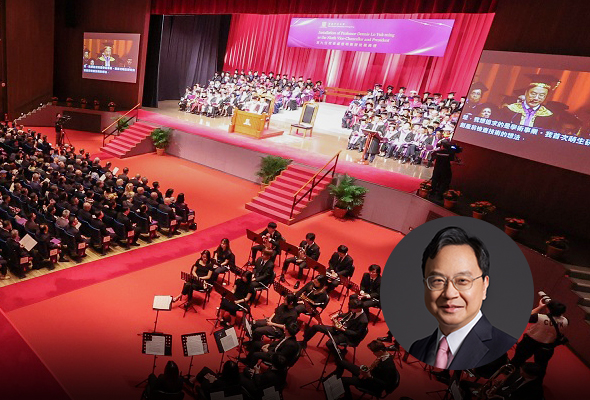Identifying China’s economic success
Economist and former CUHK Vice-Chancellor Lawrence Lau dispels myths at book launch
China’s economy has stood the test of time since embarking on a path of reform and opening up in 1978. Despite slowing in recent years, it is not heading for the Japanese-style lost decades that began in the 1990s, says former Vice-Chancellor and President of CUHK Professor Lawrence Juen-yee Lau.
His new book, Is the Chinese Economy a Miracle or a Bubble?, observes that the country has demonstrated durability and sustainability.
“Is the Chinese economy a miracle or a bubble?” Professor Lau stresses the question. “I would like to show that the country’s successful economic growth may seem surprising, but it is in fact explicable; the sources of such growth can be identified.
“I hope to convince readers that the growth of the Chinese economy is neither a miracle nor a bubble, and that it will continue its solid and steady growth.”
For the past four and a half decades, China has advanced at an average annual rate of almost 9%. No other economy in recorded history has grown so rapidly over such a protracted period.
Its slowdown in recent years has naturally given rise to the question: Was the Chinese economy a miracle or a bubble? Professor Lau, who developed one of the earliest econometric models of China, projects that in the years ahead, it is expected to continue growing at between 5% and 6% annually on average. “Therefore, it is definitely not a bubble,” he explains.
CUHK’s sixth Vice-Chancellor, through the 500-page book published by the Chinese University of Hong Kong Press, provides a comprehensive discussion of the country’s remarkable economic growth since 1978 and evaluates a unique “dual-track” approach adopted by the Chinese government.
He shared his thoughts with the CUHK community at the book launch on campus on 21 November. Among the attendees were Provost Professor Alan Chan, Pro-Vice-Chancellors Professor Sham Mai-har and Professor Anthony Chan Tak-cheung, as well as Edgar Cheng, former CUHK Council Chairman, and Joseph Yam Chi-kwong, the first Chief Executive of the Hong Kong Monetary Authority and Honorary Professor of the CUHK Business School.

“The unique advantages of the Chinese economy are what makes its economic reform so successful,” said Professor Lau.
In its transition from central planning to a market economy, China adopted a dual-track approach, so called because of the co-existence of a mandatory central plan and the establishment of free markets. This approach ensured that no one would lose and safeguarded individual rights.
He explained: “A distinguishing characteristic of Chinese economic reform is its emphasis on ensuring that there are no losers. In this case, everyone is better off. It maximises public support and minimises opposition.”
The large size of the Chinese economy and its domestic market are favourable to the country’s growth trajectory. China can afford to conduct pilot experiments and test out new approaches before deciding on one which is most likely to achieve the best outcome for the most people.
Professor Lau provides an example in the book to illustrate his point. “There are many pilot schemes being tested in different localities. If they prove successful, they will be extended to the entire country; if not, they will be abandoned.
“For instance, the introduction of the household responsibility system started with only one village in Anhui province with 18 households.” The system generated incentives for production by giving farmers rights in freedom of land use and decision-making. It has improved agricultural productivity, promoted economic growth and alleviated poverty in rural populations.
At the book launch, Professor Lau also noted how China’s huge domestic market reduced its dependence on international trade, making the country less susceptible to external disturbances. The country’s economies of scale and its practice of “learning by doing” led to improved efficiency resulting from repetitive production of the same types of goods.
“These are some of the Chinese economy’s obvious advantages,” he said. “Examples include the production of high-speed trains and electric vehicles. The large size of the Chinese economy means that the state can rely more on the domestic market. To date, China is the largest producer of electric vehicles.”
Promising prospects
Professor Lau also discussed implications of China’s real gross domestic product and annual rate of growth before and during the economic reform. The numbers fluctuated yearly prior to 1978 but began to stabilise thereafter, consistently maintaining positive growth rates. “It shows how successful the reform and opening up was,” he said.
“The year 2001 was pivotal to China’s economic trajectory,” Professor Lau continued. “The country officially became a member of the World Trade Organisation (WTO), and its GDP started to accelerate.” Since then, as explained in the professor’s book, the Chinese economy has undergone a significant transformation driven by the growth of net exports. The country also witnessed a massive movement of labour from rural areas into cities.
Speaking of long-term prospects, Professor Lau is optimistic. “Domestically, China has shifted its emphasis from quantity of growth to quality of growth, which has led to sustained improvements in human capital, the environment, public health and poverty alleviation,” the professor told his audience. He added that maintaining adequate growth of aggregate demand would be essential for the country’s continued economic durability and prosperity.

During the panel discussion, Professor Lau shared his perspectives about copying the Chinese way of growth. He believed that other closed centrally planned economies could replicate China’s economic success by transitioning to an open market economy. “The Chinese model of economic reform has been adopted in formerly centrally planned economies such as Vietnam and Cambodia. It may turn out to be potentially suitable for Cuba and North Korea as well.”
Gan Qi, Director of CUHK Press, said that in 2018, CUHK Press released the bilingual editions of The China-U.S. Trade War and Future Economic Relations by Professor Lau. “The professor provides an indispensable reference for understanding the past, present and future of the Chinese economy. His next book is scheduled for publication in 2025,” the veteran publisher said.
By Gillian Cheng
Photos courtesy of CUHK Press




















